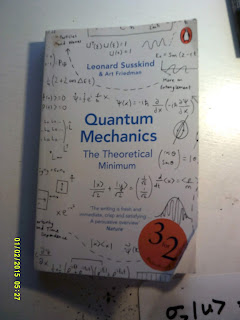I'm reading this wonderful book again. I have been stuck for a long time trying to get an understanding of what a state actually means in Quantum Mechanics. I started with eigenvalues and eigenvectors for spin. If the spin operator acts on |u> then it remains unchanged. So |u> is an eigenvector. The eigenvalue is the multiplier - in this case it is +1. Notice that applied to |d> you get the same vector |d> but multiplied by -1. So |d> is an eigenvector with eigenvalue -1. The significance of the eigenvalues is that whatever state the system is in, you only ever measure it out as +1 or -1. So I picked another state vector and multiplied it out. I showed that it could be written in terms of the eigenvectors |u> and |d>. However if the system is in this mixed up state and you measure, you still get either +1 or -1. These are the eigenvalues. I have been wondering what the significance of the eigenvectors are.

Susskind says that this component state vector tells us the probability of measuring +1 or -1. I experimented myself with the maths, so what is below might be wrong but I think that the expectation value is the inner product squared. I get a probability of 1/2 which is what I expected. I think I have uncovered the significance of the orthogonal basis. The zero result for
removes it from the equation. Orthogonal products give either 1 or 0.
I have struggled with degenerate states. Different eigenvectors but with the same eigenvalue. So only one value is measured. The eigenvectors are not orthogonal but you can construct an orthogonal basis by putting together linear combinations of them. I am trying to get this in writing whilst I am thinking about it and may have to publish corrections later.


